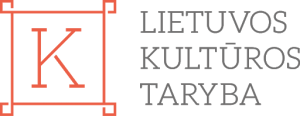
#23 A City’ Joints and Muscles: About the Links Between Architecture and Art
Treading the multilayer. A walk in Vilnius
Why the talk is inspiring?
Walking is not only a way to move but also a way to interpret and observe, suggested by the artist Vitalij Červiakov and the art critic Jolanta Marcišauskytė-Jurašienė to be used when considering the case of urban spaces in Vilnius. Vilnius has its own memory and conscience, hiding not only in the facades of the Old Town architecture, its main squares, monuments and tourist routes but also somewhere in-between the vertebrae of the major narratives. What narratives are these? How does the multi-layeredness of the city’s memory show through the fabric of the streets we see every day? How could the ability to read it serve the creation of new objects in the body of the city?
This is not an outgoing lecture or a field trip but rather an attempt to express the insights and results of cultural research into memory attained by culturologists, sociologists and heritage researchers. The alternative walk is organised as an appropriation or a visualisation of the theoretical discourse developed in the book Atminties daugiasluoksniškumas. Miestas, valstybė, regionas (Lithuanian Institute of History, 2013).
The group walk will encourage us to closely watch and listen to the surroundings, the architectural and public space formations, sculptural accents, locations, the cracks and fissures in the palimpsest of memory resulting from human activity.
Walks will take place on September 27th at 7 pm, October 4th at 10 pm and October 11th at 6 am. Duration 2 hrs. Meeting place – National Gallery of Art (Konstitucijos pr. 22). Smartphone with headphones necessary.
The number of participants is limited. Feel free to register at jolanta@ndg.lt. The walk will be in Lithuanian.
Photo by Vitalij Červiakov.
2018
Speaker
Vitalij Červiakov, Jolanta Marcišauskytė-Jurašienė
How the speaker is exceptional?
Vitalij Červiakov is an interdisciplinary artist living and working in Vilnius, who consistently applies walking as a method of contemplation and research. A large part of his creative work is related to Vilnius.
RECOMMENDS TO READ
Atminties daugiasluoksniškumas: miestas, valstybė, regionas
Sud. Alvydas Nikžentaitis
Why the book is worth reading?
The book concludes the empirical and theoretical outcomes of the project Strategies for Shaping Memorial Cultures in Lithuanian Urban Spaces, initiated by the Lithuanian Institute of History. Insights by Lithuanian and foreign historians, sociologists and heritage theorists into the role and functions of memorial culture in describing the identity of a city, country, region, as well as the importance of forming and landmarking urban spaces and other important issues, show the broadness, the dynamic nature of the discourse and its inevitable links to every-day environment. This book will definitely be of interest to those who want to understand how and through what means memorial cultures function and why monuments in public spaces always spark heated debate.

